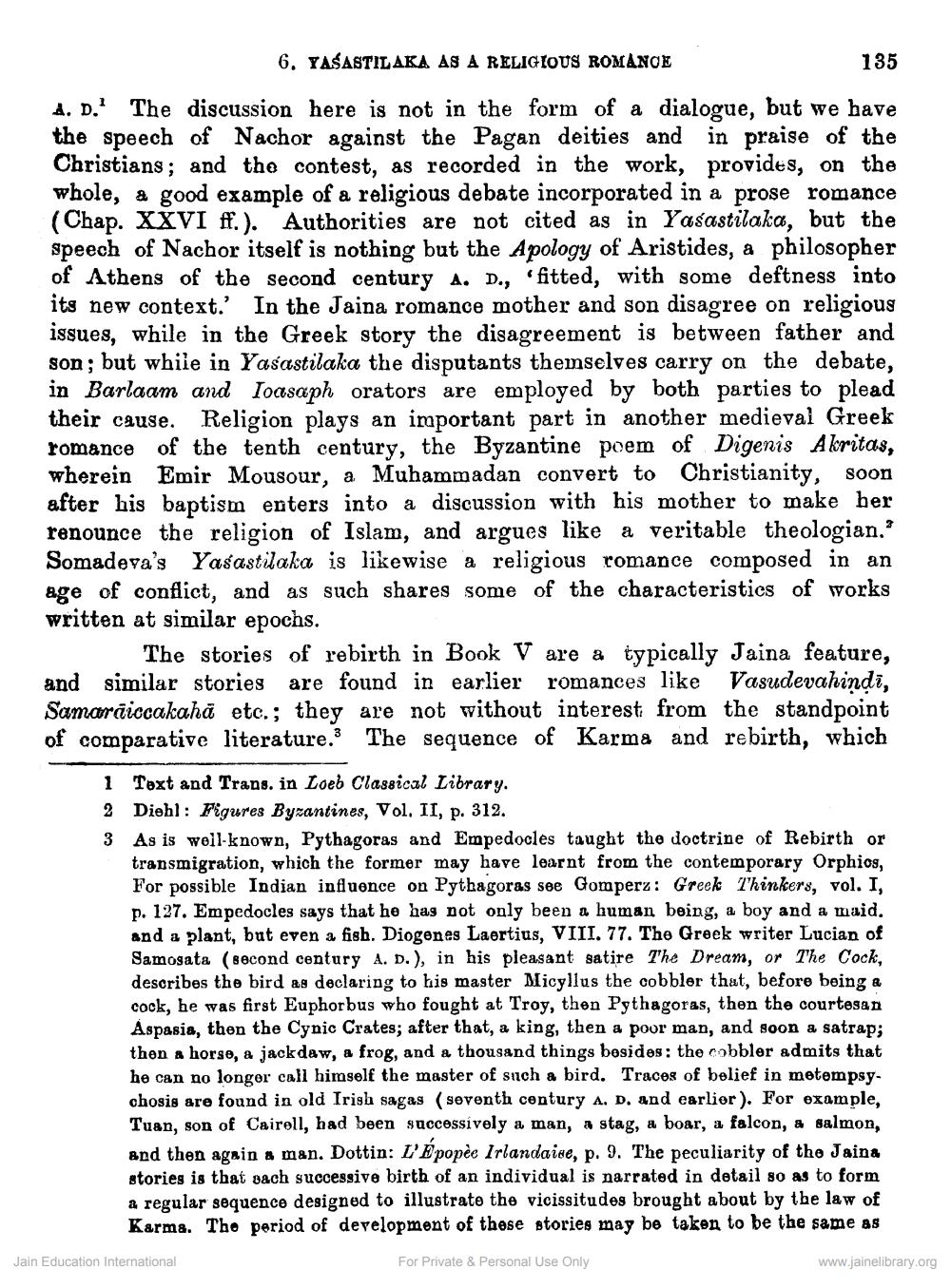________________
6. YAŠASTILAKA AS A RELIGIOUS ROMANCE
135
A. D.' The discussion here is not in the form of a dialogue, but we have the speech of Nachor against the Pagan deities and in praise of the Christians; and the contest, as recorded in the work, provides, on the whole, a good example of a religious debate incorporated in a prose romance ( Chap. XXVI ff.). Authorities are not cited as in Yasastilaka, but the speech of Nachor itself is nothing but the Apology of Aristides, a philosopher of Athens of the second century A. D., fitted, with some deftness into its new context.' In the Jaina romance mother and son disagree on religious issues, while in the Greek story the disagreement is between father and son; but while in Yasastilaka the disputants themselves carry on the debate, in Barlaam and Ioasaph orators are employed by both parties to plead their cause. Religion plays an important part in another medieval Greek romance of the tenth century, the Byzantine poem of Digenis Akritas, wherein Emir Mousour, a Muhammadan convert to Christianity, soon after his baptism enters into a discussion with his mother to make her renounce the religion of Islam, and argues like a veritable theologian.' Somadeva's Yasastilaka is likewise a religious romance composed in an age of conflict, and as such shares some of the characteristics of works written at similar epochs.
The stories of rebirth in Book V are a typically Jaina feature, and similar stories are found in earlier romances like Vasudevahindi, Samarãiocakahā etc.; they are not without interest from the standpoint of comparative literature. The sequence of Karma and rebirth, which
1 Text and Trans. in Loeb Classical Library. 2 Diehl: Figures Byzantines, Vol. II, p. 312. 3 As is well-known, Pythagoras and Empedocles taught the doctrine of Rebirth or
transmigration, which the former may have learnt from the contemporary Orphics, For possible Indian influence on Pythagoras see Gomperz: Greek Thinkers, vol. I, p. 127. Empedocles says that he has not only been a human being, a boy and a maid. and a plant, but even a fish. Diogenes Laertius, VIII. 77. The Greek writer Lucian of Samogata (second century A. D.), in his pleasant satire The Dream, or The Cock, describes the bird as declaring to his master Micyllus the cobbler that, before being a cock, he was first Euphorbus who fought at Troy, then Pythagoras, then the courtesan Aspasia, then the Cynic Crates; after that, a king, then a poor man, and soon a satrap; thon a horse, a jackdaw, a frog, and a thousand things besides: the cobbler admits that he can no longer call himself the master of such a bird. Traces of belief in motempsychosis are found in old Irish sagas (seventh century A. D. and earlier). For example, Tuan, son of Cairell, had been successively a man, a stag, a boar, a falcon, a salmon, and then again a man. Dottin: L'Épopee Irlandaise, p. 9. The peculiarity of the Jaina stories is that vach successive birth of an individual is narrated in detail so as to form a regular sequence designed to illustrate the vicissitudes brought about by the law of Karma. The period of development of these stories may be taken to be the same as
Jain Education International
For Private & Personal Use Only
www.jainelibrary.org




